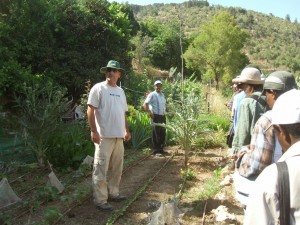
How do lazy people and companies declare carbon neutrality? By carrying on in their old ways and by buying carbon credits. This university started in 2009 and they did not take the short-cut. This is how you lead the next generation forward.
Colorado College has achieved carbon neutrality, a goal it set in 2009 when it committed to becoming carbon neutral by 2020. After a decade of work, the ambitious target has been met — even as the college increased its building footprint by more than 10% during that time. CC is only the eighth institution in North America, and the first in the Rocky Mountain region, to achieve this goal.
Colorado College stands out among other schools that have reached carbon neutrality in an important way. The selective liberal arts school at the base of Pikes Peak, has the greatest emission reductions on campus while buying fewer offsets than any other US campus. This means the milestone has been achieved primarily by steep reductions in the college’s carbon footprint on campus.
Not buying their way to becoming carbon neutral

“We’ve done the difficult work of reducing our on-campus emissions first, rather than what some see as ‘buying our way’ to neutrality through offsets,” said Director of Sustainability Ian Johnson.
Colorado College has done this in a replicable and scalable way, meaning nearly any other institution could apply the strategies used by CC to achieve its goal of carbon neutrality. Offset market development also is critical, notes Johnson, but only after working to reduce on-campus emissions as much as possible.
Another significant factor is that Colorado College is the only carbon-neutral institution located in a high carbon intensity electric grid with two functioning coal plants operating in the city. This is noteworthy, said Johnson, because “electricity use in our region generates more carbon emissions than most any other region, making major reductions in our footprint all the more difficult to achieve as our electricity use pushes up emission faster than other institutions. It also means our renewable energy generation and use have bigger impacts on global emissions than in other regions.”
Colorado College embarked on its journey to carbon neutrality in 2009. Since the college’s baseline year in 2008, CC has reduced on-campus emissions by 75%. Colorado College achieved neutrality through a variety of initiatives, including efficiency upgrades, building renovations, campus engagement, on-site renewable energy and local renewable energy purchases, reducing its carbon footprint even as its physical footprint expanded by 10% with the alliance with the Colorado Springs Fine Arts Center in 2017.
Between the Fine Arts Center and the Bemis School of Art, CC added more than 142,000 square feet to its building footprint.
Because climate change is linked to and influenced by many different factors — from environmental racism to human health and income inequality, clean water, food production and access, and more — achieving carbon neutrality impacts far more than just the college’s operations, says Johnson.
Many of the initiatives the college is undertaking, including adding more sustainability courses and finding new ways to make the college more accessible to students from diverse geographic, ethnic and socioeconomic backgrounds, increase students’ literacy and understanding across majors and strengthen the institutions that build the resilient society that will be needed to adapt to impacts from climate change.
Some of the college’s major carbon neutral initiatives have included:
- A behavioral change program involving 14 weeks, 14 habits and a 14% reduction in electricity, heat and water use. CC saved nearly $100,000 in utility costs through the “aCClimate14” effort.
- Colorado College’s first high-performance energy design guidelines were written for new and renovated buildings.
- Tutt Library became the nation’s largest academic net-zero energy library following a massive underground geothermal energy project and major renovations.
- East Campus Housing opened with sustainable architecture and energy systems.
- Numerous solar PV installations were constructed on and off campus, originally initiated by a student in 2008.
- CC has worked with Colorado Springs Utilities over the past decade to find ways to partner and meet its goals. This helped lead to the addition of the 255 megawatts of solar in current and planned projects for the utility.
To account for remaining emissions, which include difficult-to-avoid emissions such as college-related air travel, study abroad, commuting and wastewater, Colorado College is investing in carbon offsets — innovative projects that reduce or eliminate greenhouse gas emissions elsewhere.
Specifically, the college has invested in a methane destruction project at the Larimer Country landfill in Northern Colorado. This project prevents methane (CH4), a very potent greenhouse gas, from entering the atmosphere, and instead uses the CH4 to generate electricity directly to the Larimer County community.
Although Colorado College has met its carbon neutrality goal, it does not mean the work is finished.
Colorado College also is looking at options to not simply purchase carbon offsets, but to invest in developing new projects that are more socially and environmentally responsible, thereby benefiting its core academic mission, developing markets as part of the solution to climate change and providing positive social benefits for the community and region.
Carbon defined:
How is “climate neutral” defined?
Climate-neutral means that the operation of the business does not increase the amount of greenhouse gases in the atmosphere. However, there are differences in how CO2 can be avoided.
A business can either reduce the emissions on-site itself by adapting its processes or by participating in certified projects to compensate for CO2 production, i.e. the business pays fees to an organization that finances projects to reduce the number of greenhouse gases in emerging and developing countries.
Both options contribute to reducing CO2 emissions into the atmosphere.
Climate-positive goes even further; more CO2 is compensated for through climate protection projects or own process optimizations than is actually produced, thus making a positive contribution to the environment.
Zero emissions are defined by the fact that neither the construction nor the operation of the business produces environmentally harmful emissions



